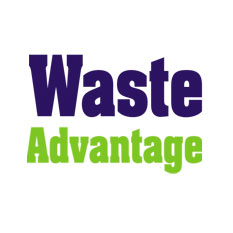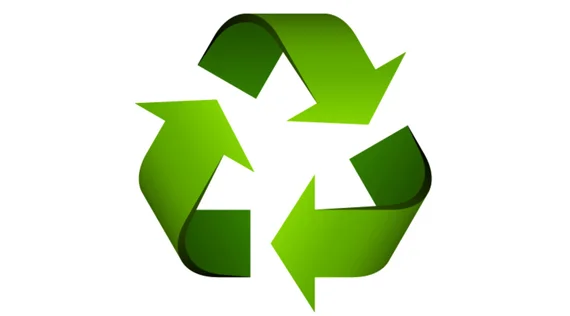Combatting contamination in waste management requires a holistic approach, with innovation at every touchpoint.
SEATTLE (Waste Advantage): Contamination in commercial waste and recycling continues to be a concern as landfill levels reach all-time highs. A single contaminated material can end up sending an entire load of recyclables to the landfill and leave a business with costly contamination fees. This can undermine recycling efforts and increase operational costs. Course-correcting at various points in the waste stream through advancements in waste technology is the most effective way to improve sorting efficiency, reduce contamination rates ,and drive down emission rates.
In single-stream recycling, contamination occurs when non-recyclable or improperly prepared items are placed in recycling dumpsters, making it difficult or impossible to process the recyclables at a materials recovery facility (MRF). Contaminants can include items such as large volumes of plastic bags, food residue, greasy containers, and sometimes broken glass, all of which not only end up being redirected to landfills, but can also jam sorting machinery and degrade the quality of recyclables.
This often stems from well-intentioned but incorrect recycling habits, such as “wishcycling,” whereby non-recyclable items are disposed of in the recycling dumpster in hopes that they will be properly handled downstream. Contamination can also happen when a landfill-bound dumpster is full and, out of convenience, a recycling dumpster is improperly used to dispose of additional landfill waste. Additionally, recycling guidelines vary between municipalities, adding confusion regarding what is and is not accepted as recyclable. A proactive approach that includes clear guidelines, community and employee education, and enforcement of proper sorting practices is essential for reducing contamination and improving recycling program efficiency. Point-of-disposal technologies as well as sorting technologies simplify this effort.
Reducing Contamination at the Point of Disposal with AI
Single-stream recycling is designed with the intent to make recycling easier, but it can often result in higher contamination levels. A key opportunity to reduce contamination is at the point of disposal, where confusion about what can be recycled results in improper disposal, and resultantly, unintentional contamination. This is a challenge we all play a part in addressing. Improving practices at this stage to reduce contamination before materials are collected can have a significant impact, as highly contaminated loads head to landfills instead of recycling facilities, which are one of the largest sources of methane emissions in the U.S., according to the EPA.
AI-based solutions offer a way forward by helping detect non-recyclable materials early, guiding better disposal practices and reducing contamination across the waste stream. This technology can support everyone across the waste ecosystem, from waste haulers and service providers to consumers and businesses—all of whom play a part in improving recycling outcomes by working together and with more information.
Point A: Small Trash and Recycling Bins
Human error plays a role as people initially throw waste away in a trash or recycling bin at collection points where various disposal bins are presented. Unclear and inconsistent rules, along with lack of training, can cause confusion and result in improper disposal, and resultantly, contamination. AI-based technology can be used to provide guidance at the moment of disposal. Is this item recyclable? Let smart technology guide the decision to inform proper recycling and boost diversion.
Smart bins equipped with camera sensors and real-time feedback monitors use AI to detect the type of waste being placed in the bin and offer directions to dispose of items in the correct bin. Businesses can also use data from smart bins to gain a better understanding of waste generation patterns and implement targeted waste reduction strategies.
In addition, creating online platforms can facilitate community challenges and incentives for proper recycling, helping to improve proper waste disposal training. These platforms can gamify the recycling process, rewarding participants with incentives for proper disposal. Additionally, AI like ChatGPT could be suggested as a resource to ask questions about what is and is not recyclable.
Point B: Commercial Dumpsters
The EPA estimates that about a quarter of recycling truck hauls are too contaminated to be taken to a recycling facility. Let’s examine one of the smart waste management technologies available today that plays a critical role in contamination reduction at this point in the waste stream.
AI-powered dumpster monitoring cameras and recognition technology offer one of the most advanced analyses of waste operations. Smart cameras continuously collect daily data on dumpster fullness and dumpster contents and can identify when a dumpster has been contaminated. This information is used to provide alerts in advance to remove the contamination before collection and for corrective action to avoid future contamination.
This AI camera technology can also help identify dumpster fullness, helping to optimize service levels to avoid the overflow of non-recyclables into the recycling dumpster as a result of the landfill dumpster being too full.
Gaining Insights into Materials at the MRF
In recent years, we have seen an increase in international laws that have made recycling contamination a growing concern for MRFs. There are now stricter standards for MRFs to produce cleaner and less contaminated materials than before. Advancements in technology have facilitated a significantly streamlined sorting process to reduce contamination levels and understand more about the composition of recyclables.
Advanced sorting technologies, such as conveyor belts equipped with AI and robotics, can rapidly identify and separate recyclable materials from contaminants. Optical sensors can also detect various plastics and metals, allowing for quick and accurate sorting. However, this does not help upstream in avoiding recyclables from being permanently contaminated or loads of recyclables unnecessarily being sent to landfills. That is why upstream technology like dumpster cameras and sensors is still a vital advancement in reducing contamination as early as possible.
The Benefits of Adopting AI Technology Throughout the Waste Process
Integrating technology at various stages of the waste stream offers a number of benefits such as:
• Reduced contamination through improved sorting accuracy: AI-powered systems can identify and/or sort recyclables more accurately than manual or traditional methods, and provide real-time feedback for manual disposal, reducing contamination by helping correctly classify materials. They can also more accurately identify contamination. By having consistent visibility, contaminants will not be missed or hidden underneath other recyclables as bins and dumpster fill up.
• Meeting sustainability goals and reducing carbon emissions from landfills: Embracing technology that helps curb contamination can contribute to broader environmental sustainability goals. AI’s ability to drive reduction in contamination means fewer recyclables end up in landfills, improving the overall recycling rate and reducing environmental impact.
• Continuous improvement, learning, and education: AI systems can learn and adapt to new materials, packaging types, and contamination patterns over time. This not only ensures that sorting processes remain effective as recycling requirements evolve, but they can also accurately guide point-of-disposal decision-making to avoid contamination.
• Cost savings for businesses: For companies, contamination fees from a hauler can be expensive, especially if contamination persists. It is, of course, reasonable that haulers recoup costs that they themselves face as a function of contamination, including fees from third-party MRFs they dump at, or in the form of reduced commodity revenue for the vertically integrated providers. A technology solution that not only flags contamination, but also helps educate team members can be very valuable in reducing both contamination and costs.
• Cost savings for recyclers: By reducing contamination, AI systems help lower the costs associated with rejected loads, equipment maintenance, and labor, resulting in long-term financial benefits for recycling facilities, as well as the industry at large.
• An opportunity for haulers: In a competitive waste hauling market, differentiation from competitors by embracing advanced technology, while still in relatively early stages, is smart business. AI tools can support products like reporting and recycling services and provide additional value-adding revenue streams.
Taking a Holistic Approach to Reducing Contamination
Combatting contamination in waste management requires a holistic approach, with innovation at every touchpoint. By leveraging technology from the initial point of disposal to the materials recovery facility, it is possible to gain more insights into disposal patterns, increase diversion rates, and promote more sustainable practices.
Courtesy: www.wasteadvantage.com





 Member
Member